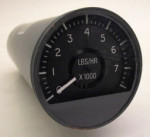The Fokker F28 Fellowship is a short range jet airliner designed and built by Dutch aircraft manufacturer Fokker. Announced by Fokker in April 1962, production was a collaboration between a number of European companies, namely Fokker, MBB of West Germany, Fokker-VFW (also of Germany), and Short Brothers of Northern Ireland. The F28 was similar in design to the British Aircraft Corporation BAC One-Eleven and Douglas DC-9, as it had a T-tail and engines mounted at the rear of the fuselage. The aircraft had wings with a slight crescent angle of sweep with ailerons at the tip, simple flaps, and five-section lift dumper only operated after landing to dump the lift. These were employed rather than reverse thrust as the designers felt that doing so not only reduced weight, but maintenance also. Having no reversers also meant that on unpaved airstrips there was less chance of the engines ingesting debris. The leading edge was fixed and was anti-iced by bleed air from the engines. The tail cone could split and be hydraulically opened to the sides to act as a variable air brake – also used on the contemporaneous Blackburn Buccaneer. This design was also used on the HS-146, which became the BAe-146. The design is unique in that it not only slows the aircraft down rapidly, it can aid in rapid descents from economic cruising altitudes and also allowed the engines to be set at higher RPM which helped eliminate 'lag time'. This means the engines respond faster if needed for sudden speed increases or go-arounds on the approach to landing. The Fellowship had a retractable tricycle landing gear which used large low pressure tyres enabling the use of unpaved airstrips. Large wheel brakes also helped in shortening the landing run.
By the time production ended in 1987, 241 airframes had been built
https://en.wikipedia.org/wiki/Fokker_F28_Fellowship
Years Manufactured:
1962 - 1987
Platform Type: Fixed Wing, Transport
Initial Maker: Fokker
Final Maker:
Fokker






